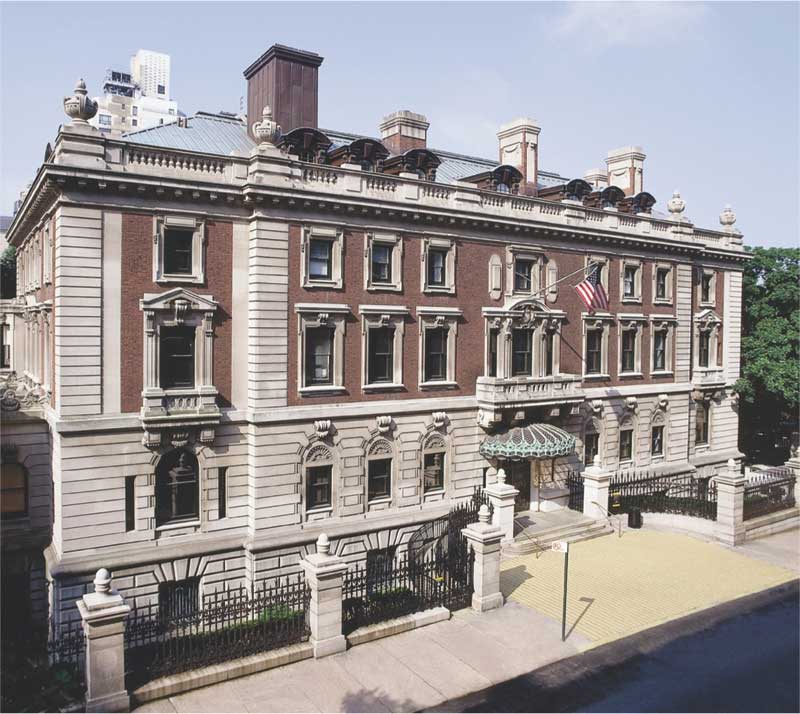A round-up of recent exhibition reviews
‘Love is Enough’ installation image © Modern Art Oxford. Image: Andy Keate. (‘Marilyn Tapestry’ courtesy of Marla and Larry Wasser, Toronto, Canada and DACS, London. Hand-coloured studio portrait with handwritten inscription © 2014 The Andy Warhol Foundation for the Visual Arts, Inc. / Artists Rights Society (ARS), New York and DACS, London)

Go With The Flow: William Morris and Andy Warhol at Modern Art Oxford (Matilda Bathurst)
Jeremy Deller’s A History of the World (1997–2004) famously takes the form of a flow diagram charting the associations between acid house and brass band music in relation to the rise and fall of British industrialism. As an established master of tenuous links, it seems only natural that Deller was chosen to curate the new exhibition at Modern Art Oxford, ‘Love is Enough: William Morris & Andy Warhol’. Morris was working within and against the structures of 19th-century industrialism, whereas Warhol’s ‘Factory’ was a 20th-century temple to mass production.
Installation view of ‘Spectacular Rubens: The Triumph of the Eucharist’, with ‘The Victory of Truth over Heresy’, (c. 1622–25), Peter Paul Rubens (Museo Nacional del Prado, Madrid), and’The Triumph of Truth over Heresy’ (1626–33), woven by Jan Raes I, Jacob Geubels II, and Jacob Fobert after designs by Peter Paul Rubens (Tapestry © Patrimonio Nacional, Monasterio de las Descalzas Reales, Madrid)

The Prado, the Getty and the Metropolitan Museum celebrate the art of tapestry (Louise Nicholson)
After Henry VIII died in 1547, his inventory listed over 2,700 tapestries for his 14 palaces and lesser homes – and this did not include bed, wall or window hangings…Tapestries were the principal way of displaying wealth, power, magnificence, or even piety when given to a monastery. Rulers sometimes kept tapestry docents on hand to educate visiting diplomats on their master’s extravagant hangings. Designed by top artists from Raphael to Rubens, most were woven in northern Europe.
Portrait of László Moholy-Nagy (detail; 1926), photo by Lucia Moholy. Photo Credit: Bauhaus-Archiv Berlin © VG Bild-Kunst, Bonn 2014

Moholy-Nagy’s pioneering multi-sensory art (Katy Barrett)
It seems increasingly that an artist’s perspective can provide precisely the individual, alternative or celebrity voices that museums themselves want, along with different types of experiences and spaces. But a recent visit to the Bauhaus Archive and Museum of Design in Berlin also showed me that these ideas are nothing new. Bauhaus artist László Moholy-Nagy was, in fact, forging a path that most modern museums would envy as early as the 1920s.
Installation view ‘Pipilotti Rist. Worry Will Vanish’, Hauser & Wirth London (2014) © Pipilotti Rist. Courtesy the artist, Hauser & Wirth and Luhring Augustine, New York. Photo: Alex Delfanne

Pipilotti Rist’s enveloping videos at Hauser & Wirth (Anneka French)
In the main space, her large-scale video Worry Will Vanish Horizon is projected across two adjoining walls whose corner creates a partially enclosing space. Soft white duvets are scattered across the carpeted gallery floor, and the room itself is curtained inside and out with denim fabric, which forms an opening to be entered. From within this series of sensual folds visitors watch Rist’s dream-like immersive videos, which are soaked with the pleasures and excesses of the body and the natural world. The viewing experience is a comfortable and lingering one, shared with others.
Cooper Hewitt Museum reopens in New York (Louise Nicholson)
The US now has a really good national museum of design. The Cooper Hewitt Smithsonian Design Museum, reopened on 12 December, already had a great collection but its setting in steel magnate Andrew Carnegie’s oak-lined New York mansion was a bad fit. All this has changed, without losing the mansion’s historic setting. As Caroline Baumann, the Cooper Hewitt’s director put it: ‘We are the nation’s design museum, so we have had a dream team of designers.’ Every inch of the museum has been meticulously considered, then renovated, amended, changed or, occasionally, done away with.



